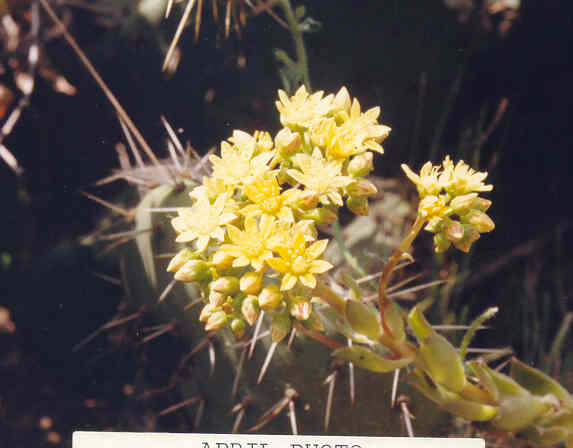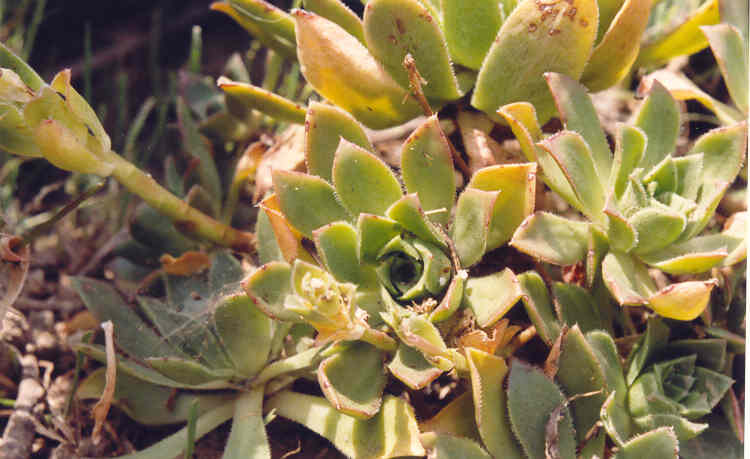
Aeonium species No. 2
Crassulaceae (Orpine Family)
Madeira, Canary Id. or N.W. Africa.
 |
Aeonium species No. 2Crassulaceae (Orpine Family)Madeira, Canary Id. or N.W. Africa.
Aeonium |
April Photo
Plant Characteristics:
Branched succulent subshrub, +/- 2 dm. tall; the clump of loose rosettes
wider than tall, younger rosettes from the stem below the main rosette, largest
rosettes 1.5 dm. in diam.; lvs. spatulate, the
largest 6 cm. long, 1.8 cm. wide, incurved about the main axis, glabrous,
fringed with white upcurved teeth, lower side with slightly raised dark green
lines parallel to the main axis of the leaf; flowering stems from below the
rosette, 1.6 dm. long to beginning of cymose panicle, stem lvs. spatulate to
nearly oblong, shorter than those in the rosette, acuminate and fringed with
short teeth; peduncles 1-2 cm. long, each with 9-12 fls.; fls. light yellow, +/-
13 mm. in diam.; petals 8, not connate except at base; stamens 16; calyx
8-parted, the divisions triangular, green, glabrous.
Habitat:
Escape from cultivation. Cult.
outdoors in warm-temp. regions, under glass in cooler climates. (Bailey 465). Spring
bloomer.
Name:
AEo-nium, dioscoridean name,
synonym of AE. arboreum. (Bailey 466).
General:
Rare in the study area; found only once and this at the base of the
Castaways Bluffs. I watched the
several plants for two years waiting for a bloom; they then were under-cut by
high tides and fell to the tidal zone. I
moved the largest clump to higher ground where it bloomed in 1992.
Whether this clump will re-root is unknown.
(my comments).
None of the 26 species of Aeonium
described in Hortus III, pages 30-31, exactly fit this species.
(John Johnson).
About 36 species. (Bailey
465).
Text Ref:
Bailey 466.
Photo Ref:
April-May 92 # 16,17,18.
Genus identity: by R. De
Ruff, confirmed by John Johnson.
First Found: April 1992.
Computer Ref: Plant Data 433.
Plant specimen donated to UC Riverside in 2004..
Last edit 8/4/05.
 |
April Photo